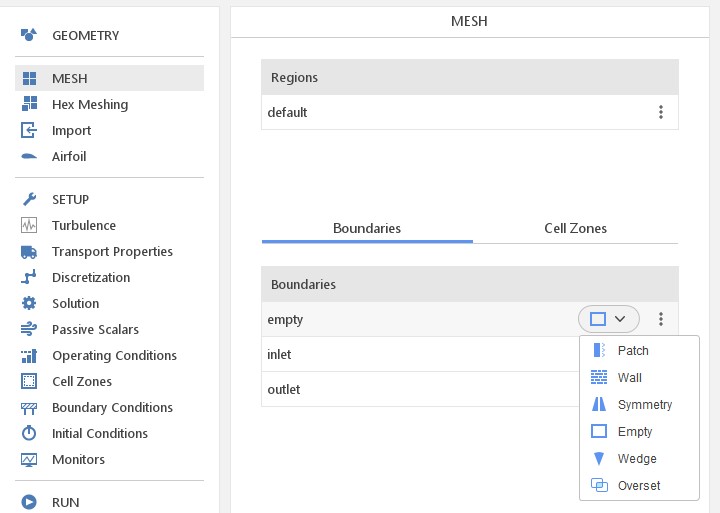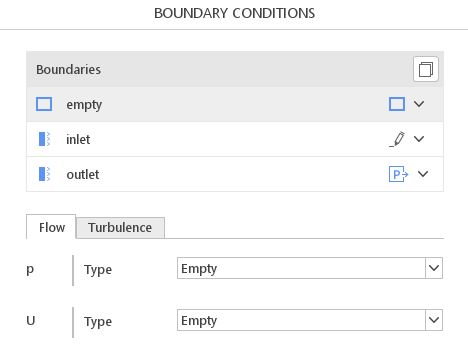Empty - Boundary Condition Description
Empty boundary condition is used to specify that a particular boundary does not participate in the simulation.
This boundary condition is crucial for simplifying a 3D case to a 2D or 1D case. In SimFlow, similarly to the OpenFOAM, only 3D meshes are supported. To perform a 2D simulation, we can create a 3D mesh containing only one layer of cells in the direction we want to exclude from the simulation. These cells should have a uniform thickness in the direction that is not being solved. The extra boundary, parallel to the flow direction, must be set to the Empty boundary condition, which will prevent the solver from solving equations in the direction normal to this boundary.
In SimFlow, when user creates a mesh by using the Plate Base Mesh type, the Empty boundary condition is automatically set for the boundaries in the direction normal to the plate.
Empty - Boundary Condition Application & Physical Interpretation
2D simulations
When performing simulations in a 2D plane, the boundaries in the direction normal to this plane (typically the z-direction), are set to Empty.
Since 2D analyses are represented by single-cell-thick 3D models, boundary conditions must be applied to the top and bottom cross-sectional surfaces. For this purpose, we use the Empty boundary condition, which simulates a large domain thickness compared to other dimensions.
Empty in Aerodynamics
Example application: Airfoil profile
These types of simulations can be solved, for example, using the simpleFoam (solver). The aerodynamic profile is small compared to the wing’s length, so it can be considered a 2D case. The created 2D mesh will automatically apply the Empty boundary condition on the top and bottom surfaces parallel to the profile.
| Tutorial | Description |
|---|---|
It simulates the two-dimensional flow around the wing’s airfoil. To enhance precision, the second-order velocity discretization method was implemented. | |
Analysis of the airfoil profile using an additional feature dedicated to 2D airfoil meshing and analysis. |
Empty - Boundary Condition How to apply Empty in SimFlow
If you are considering 2D simulation, you should choose the Plate mesh type. This will automatically set the Empty boundary condition for the appropriate boundary. In other cases, to define the Empty boundary condition, after meshing, in the Mesh panel the boundary type must be set to empty.

No further actions are necessary (in the Boundary Conditions panel). All the dependent variables will be automatically set to the Empty type.

Empty - Boundary Condition Empty - Alternatives
In this section, we propose boundary conditions that are alternative to Empty. While they may fulfill similar purposes, they might be better suited for a specific application and provide a better approximation of physical world conditions.
| Boundary Condition | Description |
|---|---|
constraint type boundary condition used for rotationally symmetric cases to represent planes in the swirl direction | |
constrain type boundary condition used for planar patches to represent a symmetry condition |